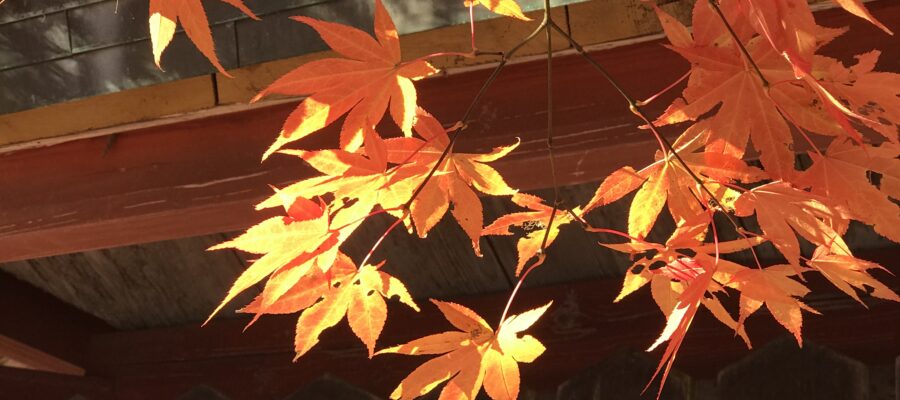神都の西北の高雄山寺
日本史の教科書で宇佐八幡宮神託事件として知られる、奈良時代に道教が皇位を簒奪するのを阻止したのが、和気清麻呂です。その清麻呂が古から紅葉の名所として知られる、都の西北に位置するこの場所に、高雄山寺(現在の神護寺)を創建しました。
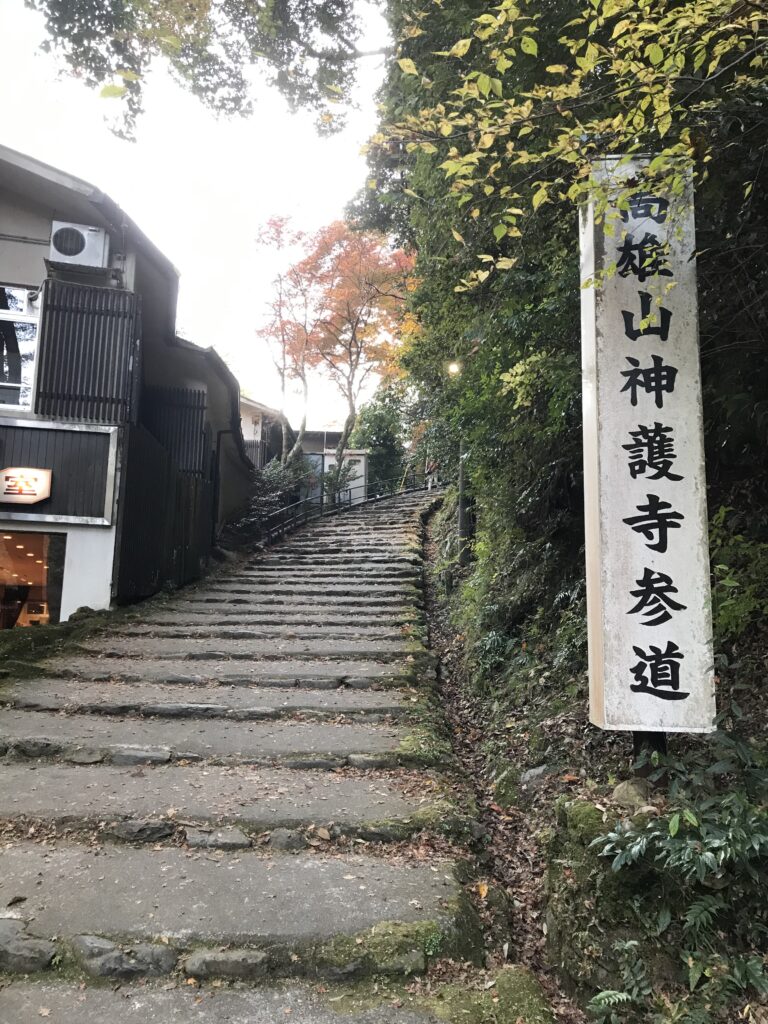
空海が14年間住持をつとめた
この高雄山寺は、和気一族により招かれた空海が、唐からの帰朝後、14年間住持をつとめたことでも有名です。ここで住持をつとめている間には、平安仏教のもう一人の雄、最澄が空海を訪ね、真言密教の儀式である灌頂を授けられています。空海に関する小説を読んで以来、ぜひ一度、空海と最澄が時間を共にした場所に来てみたいと思っていました。
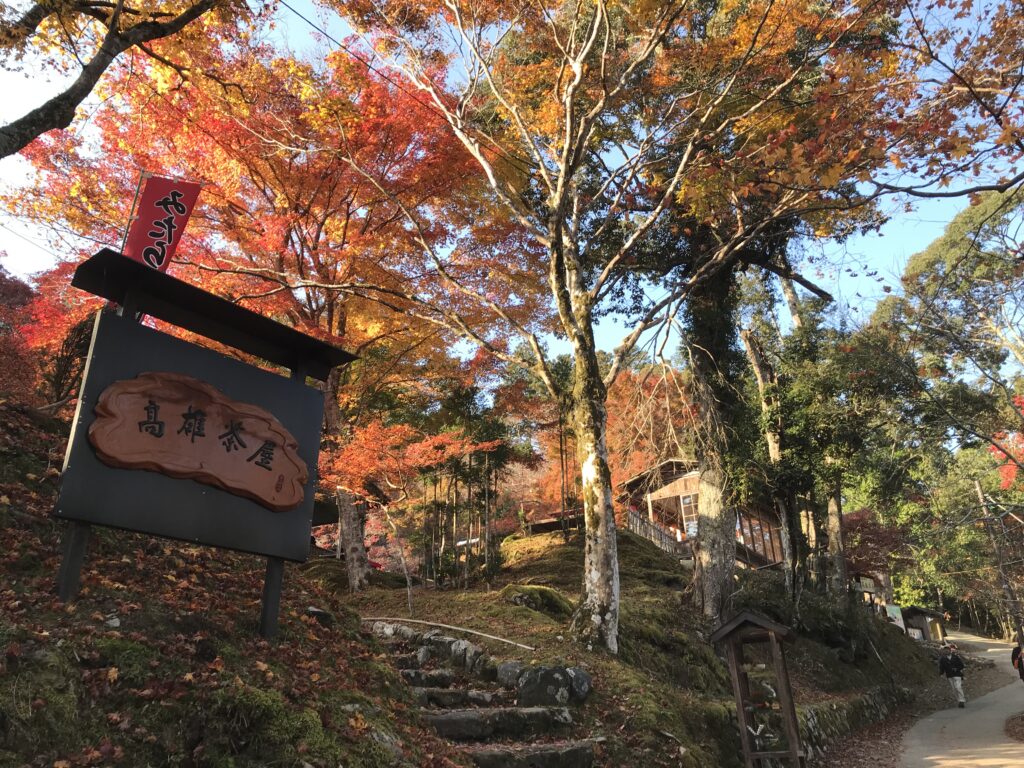
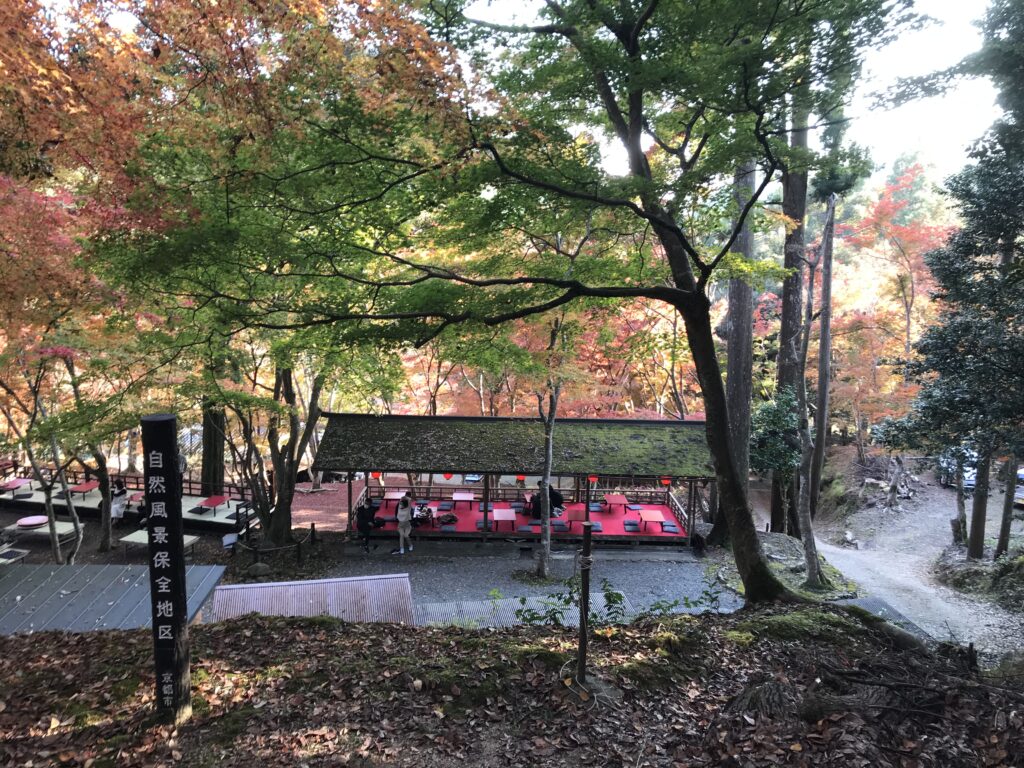
京都のJR二条駅からバスにのり、随分と時間をかけて高雄までやってきました。バス停から一旦、下っていくのですが、そこからまたお寺に向かって参道の石段を登っていくことになりました。紅葉の季節でしたので、黄色や赤色の葉を付けた樹々の中を通ってお寺の楼門を目指しますが、登りの坂に少し疲れてしまいます。
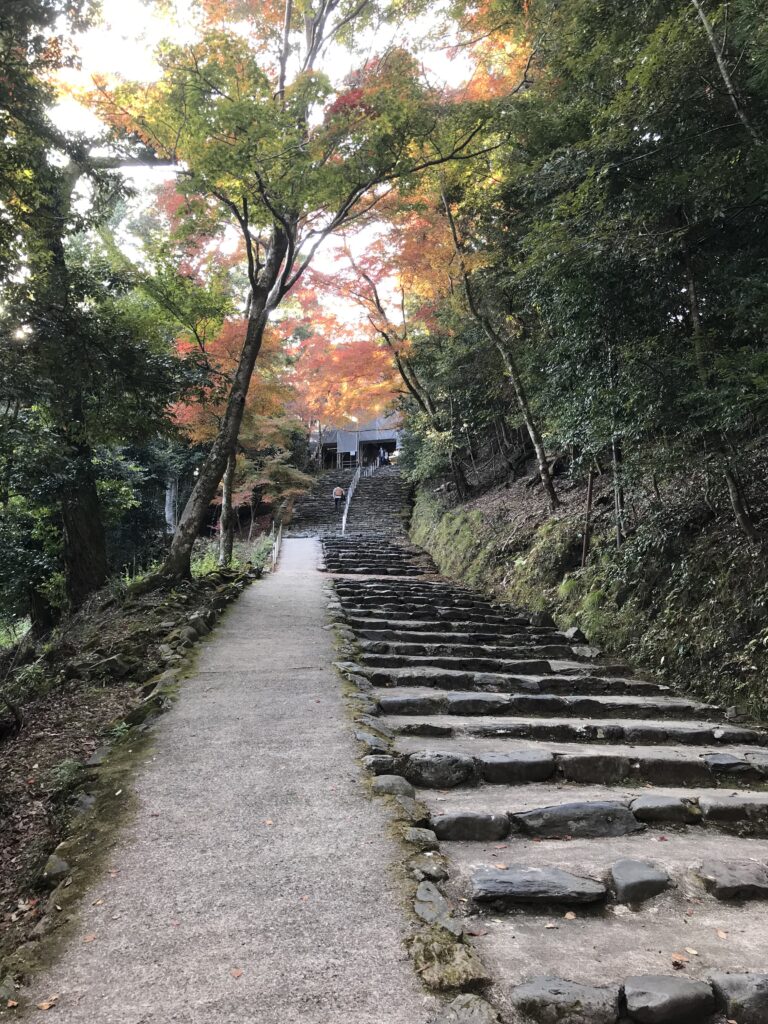
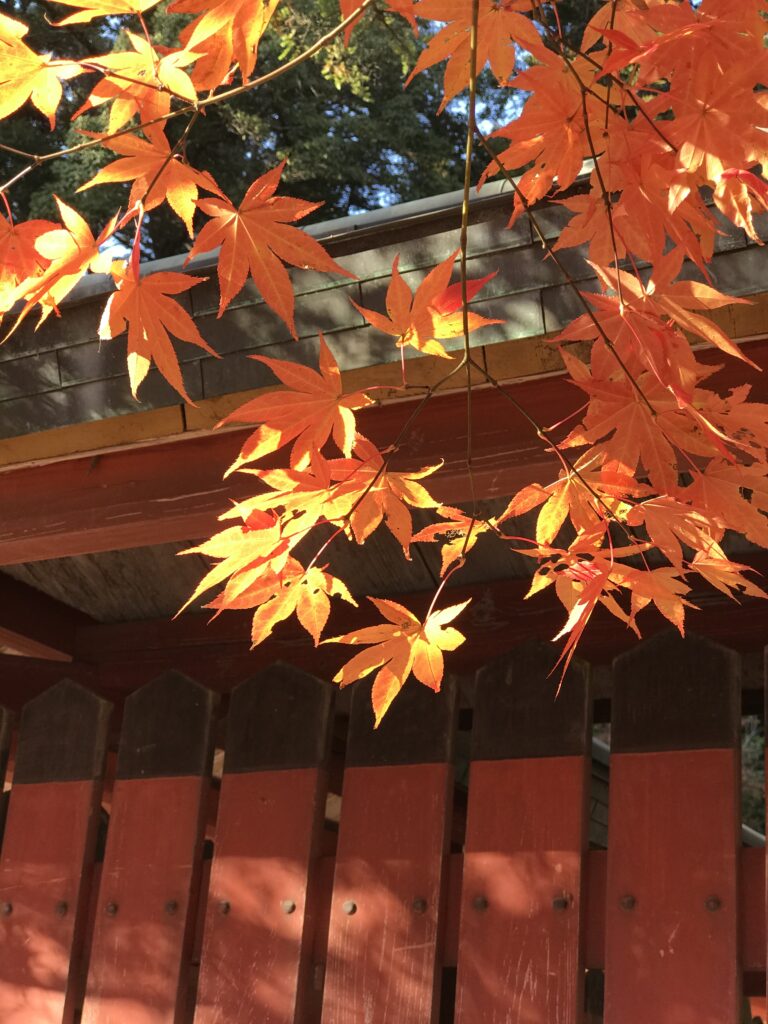
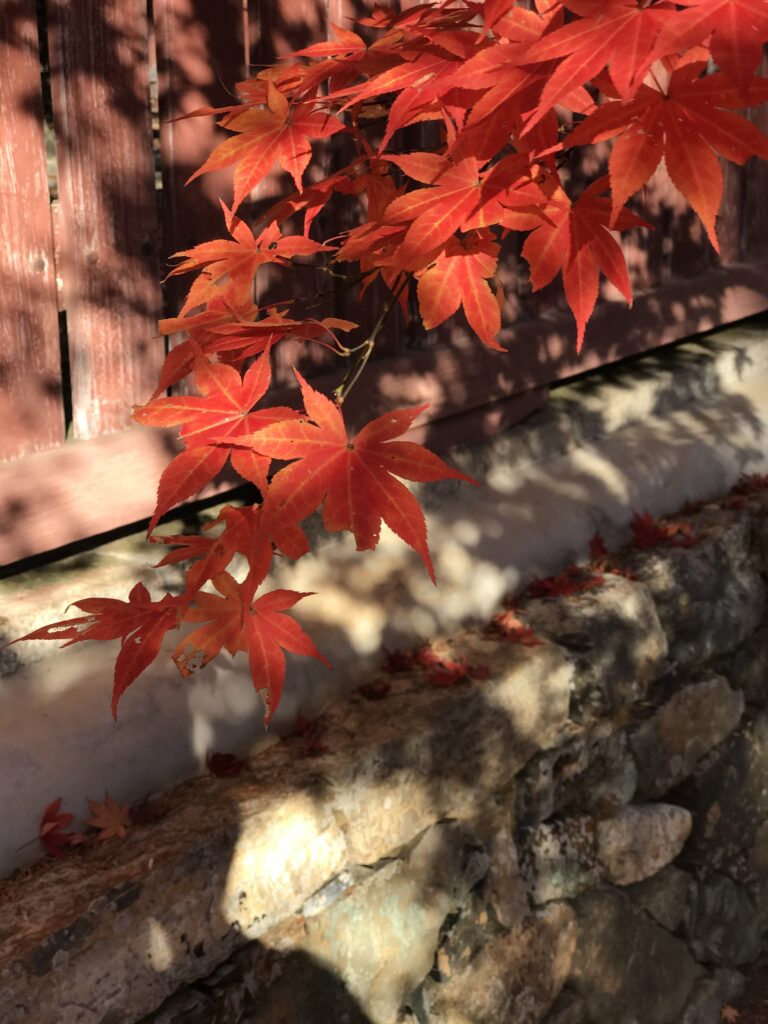
楼門を入ると、境内には何本か紅葉した樹々が、並んでいます。どんな風に写真を撮るべきか思案しながら、いろいろな角度から写真をとってみますが、鮮明な印象を表現できる写真を撮ることはかないませんでした。それでも、秋を感じながら金堂まで石段を登っていくと、大変清々しい気分になりました。
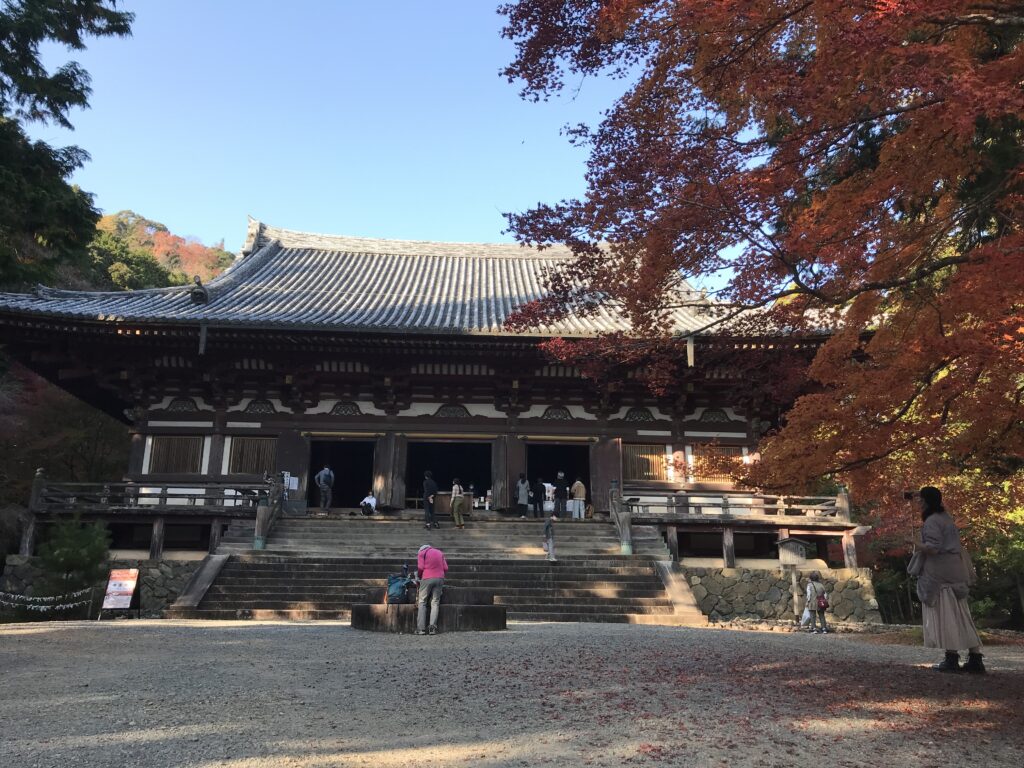
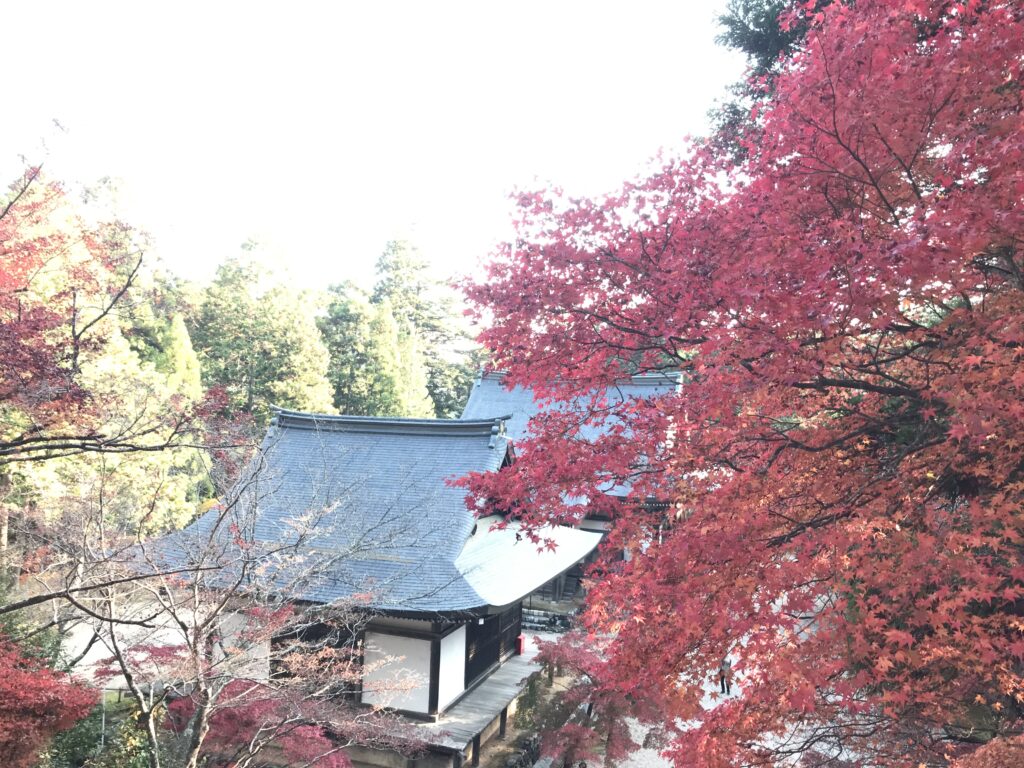
空海と最澄が並んで歩いた境内
ここを空海と最澄が並んで歩いたと思うと、境内を歩き回る内に、1200年の時を超えて、その時のイメージが頭の中に浮かんできました。最終的には決裂した二人ですが、平安仏教のスーパースター二人が肩を並べている姿は、なんとも神々しい感じがします。当時の堂宇は兵火で焼失していますので、同じ建物ではありませんが、ここから見える樹々の一部は当時のものが残っているかも知れません。(完)
神護寺の御朱印
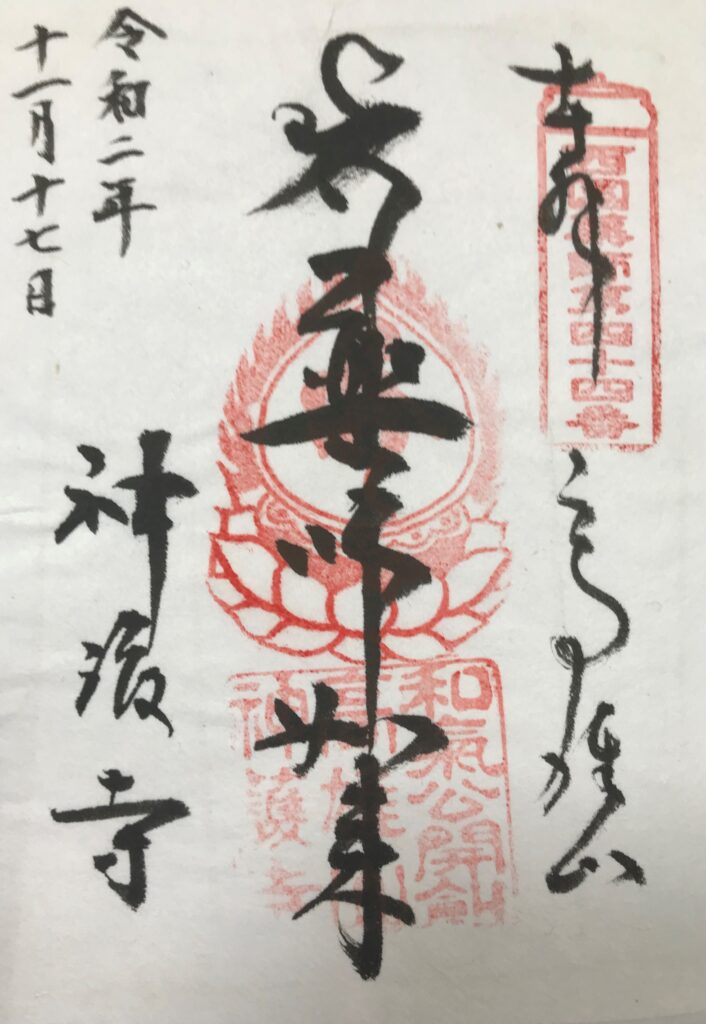
神護寺を紹介した書籍
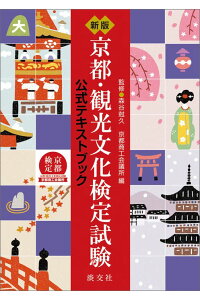
新版 京都・観光文化 検定試験 公式テキストブック 公式テキストブック [ 京都商工会議所 ]
価格:2,420円
(2021/9/11 14:06時点)
感想(5件)
Jingo-ji Temple
Known in Japanese history textbooks as the Usa Hachimangu Shrine oracle incident, Wake Kiyomaro prevented the usurpation of the imperial throne by the Monk Dokyo during the Nara period (710-794). Kiyomaro founded Takaoyama-dera Temple (today’s Jingo-ji Temple) in this location in the northwest of the capital, which has long been known for its beautiful autumn foliage.
The temple is also famous for the fact that Kukai, who was invited by the Wake clan, served as its abbot for 14 years after his return from the Tang Dynasty. During his tenure here, Saicho, another leading figure of Heian Buddhism, visited Kukai and gave him the Kannon, a Shingon esoteric Buddhism ritual. Ever since I read a novel about Kukai, I have wanted to visit the place where Kukai and Saicho spent time together.
I took a bus from JR Nijo Station in Kyoto, and it took me quite a while to get to Takao. From the bus stop, I had to go down once and then climb up the stone steps on the approach to the temple again. It was the season of autumn leaves, so I walked through the trees with yellow and red leaves to get to the temple gate, but the uphill climb was a bit tiring.
Once inside the gate, there were several trees lined up in the temple grounds with autumn leaves. I tried to take pictures from various angles, wondering how I should take pictures, but was unable to capture a clear impression. Still, I felt refreshed as I climbed the stone steps up to the Kondo Hall, feeling the autumn air.
As I walked around the temple grounds, the image of Kukai and Saicho walking side by side in this hall came to my mind, transcending the 1200 years that have passed. Although the two ultimately fell out, the sight of these two superstars of Heian Buddhism standing shoulder to shoulder was quite divine. The hall at that time was destroyed by a military fire, so it is not the same building, but some of the trees visible from here may still be from that time. (End)
Temple Jingo-ji
Connu dans les manuels d’histoire japonais sous le nom de l’incident de l’oracle du sanctuaire Usa Hachimangu, Wake Kiyomaro a empêché l’usurpation du trône impérial par le moine Dokyo pendant la période Nara (710-794). Kiyomaro a fondé le temple Takaoyama-dera (l’actuel temple Jingo-ji) à cet endroit, au nord-ouest de la capitale, qui est connu depuis longtemps pour ses magnifiques feuillages d’automne.
Le temple est également célèbre pour le fait que Kukai, qui avait été invité par le clan Wake, en a été l’abbé pendant 14 ans après son retour de la dynastie Tang. Pendant son mandat, Saicho, une autre figure de proue du bouddhisme Heian, a rendu visite à Kukai et lui a donné le Kannon, un rituel ésotérique du bouddhisme Shingon. Depuis que j’ai lu un roman sur Kukai, j’ai voulu visiter l’endroit où Kukai et Saicho ont passé du temps ensemble.
J’ai pris un bus à la gare JR de Nijo à Kyoto, et il m’a fallu un certain temps pour arriver à Takao. Depuis l’arrêt de bus, j’ai dû descendre une fois puis remonter les marches en pierre à l’approche du temple. C’était la saison des feuilles d’automne, j’ai donc traversé les arbres aux feuilles jaunes et rouges pour arriver à la porte du temple, mais la montée était un peu fatigante.
Une fois la porte franchie, il y avait plusieurs arbres alignés dans l’enceinte du temple avec des feuilles d’automne. J’ai essayé de prendre des photos sous différents angles, en me demandant comment je devais prendre des photos, mais je n’ai pas réussi à capturer une impression claire. Pourtant, je me suis senti revigoré en montant les marches en pierre jusqu’à la salle Kondo, en sentant l’air d’automne.
En me promenant dans l’enceinte du temple, l’image de Kukai et Saicho marchant côte à côte dans cette salle m’est revenue à l’esprit, transcendant les 1200 ans qui se sont écoulés. Bien que les deux hommes aient fini par se brouiller, la vue de ces deux superstars du bouddhisme de Heian se tenant côte à côte était tout à fait divine. Le hall de l’époque a été détruit par un incendie militaire, ce n’est donc pas le même bâtiment, mais certains des arbres visibles d’ici datent peut-être encore de cette époque. (Fin)
